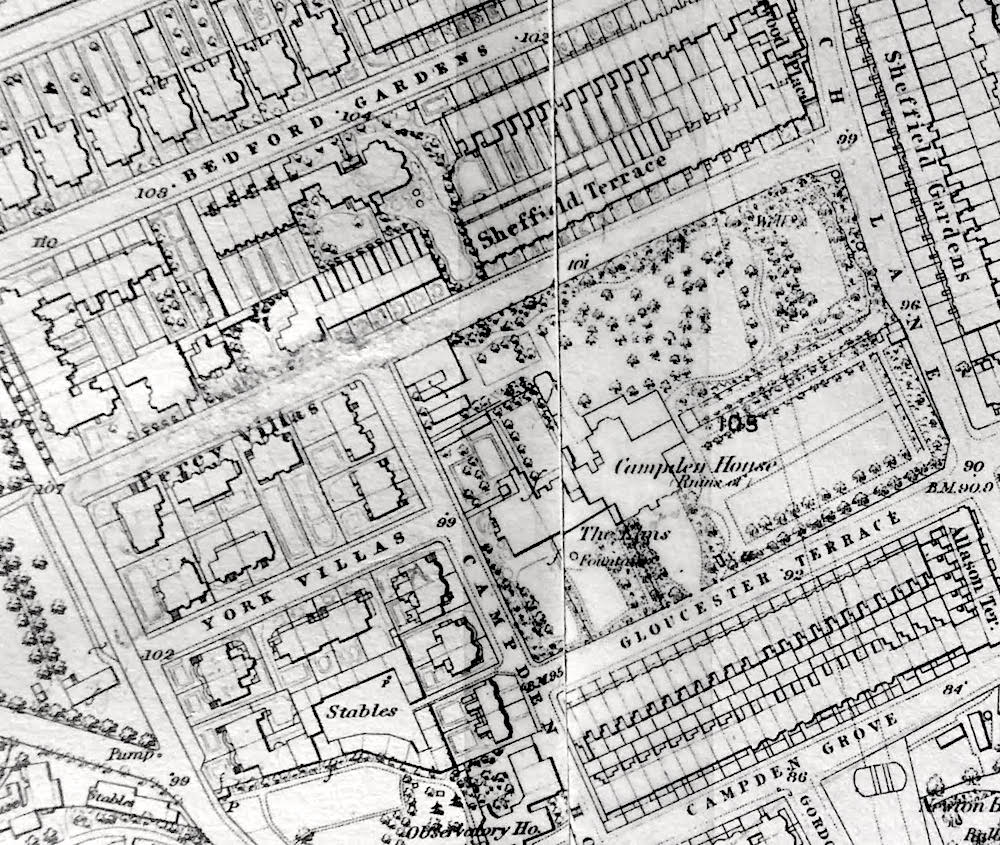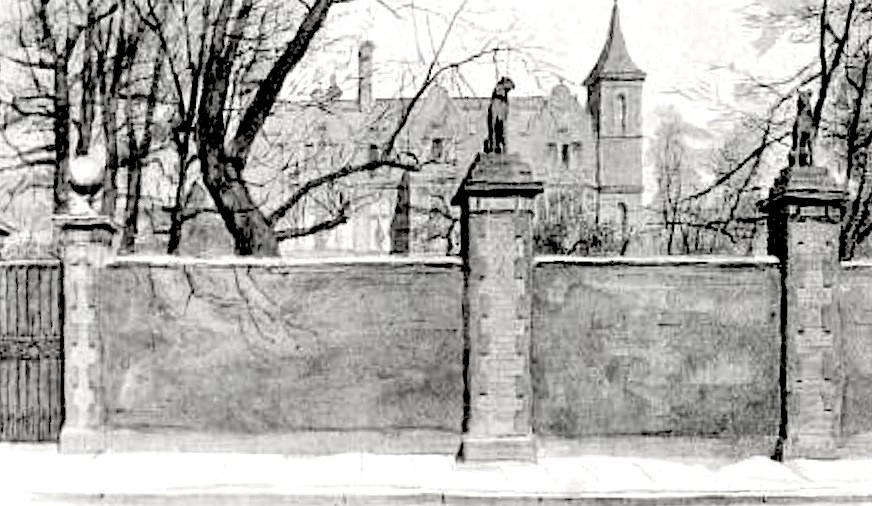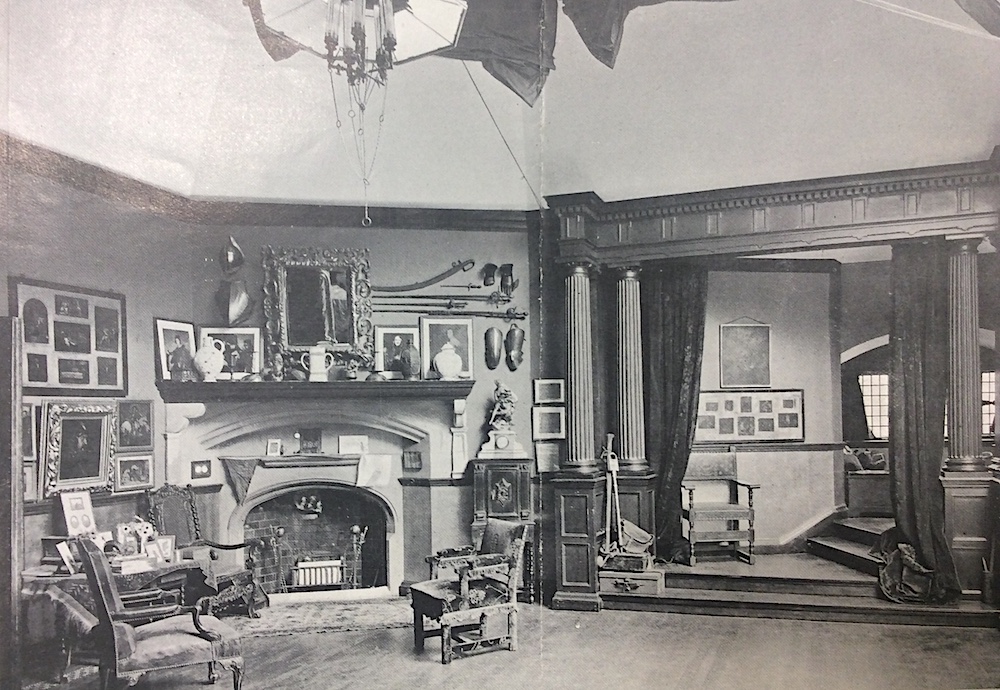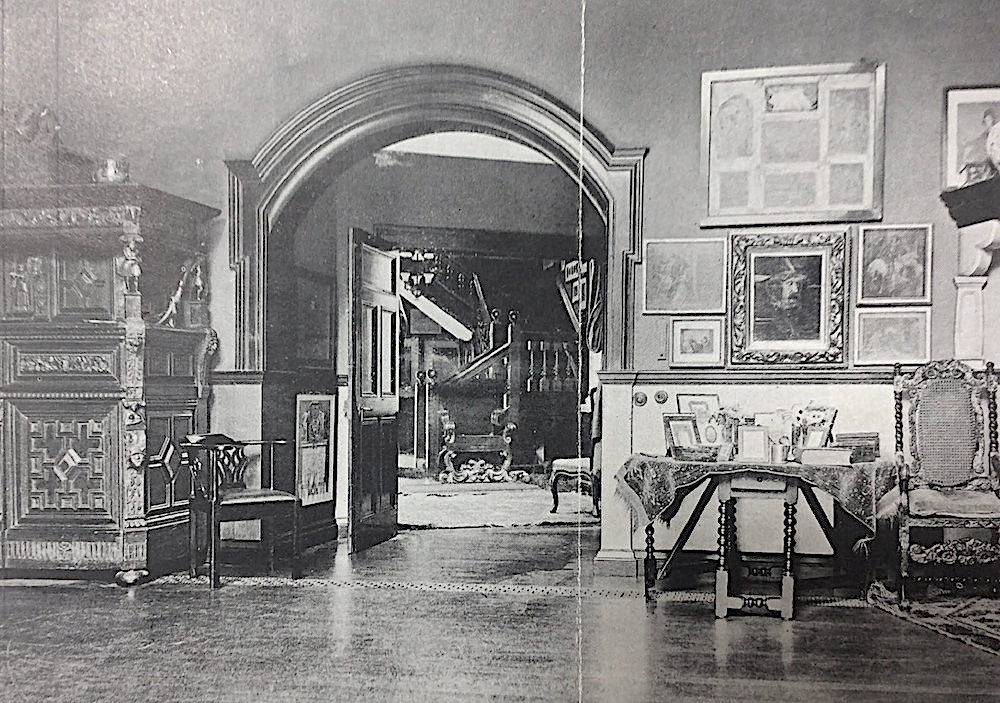The author would like to thank Tim Barringer, author of The Cole Family: Painters of the English Landscape, 1838-1975, Portsmouth City Museums, 1988), for providing archival material, including the photograph of Little Campden House in Cole's time, and the material from The World. Click on all the images to enlarge them.

Little Campden House in 1937, courtesy of the Royal Borough of Kensington and Chelsea.

he original Campden House was very imposing and went back a long way. It was built around 1612, possibly on the site of an even earlier house. The estate at that time comprised over a hundred acres of land, much of it given over to pleasure grounds. The long west wing known as Little Campden House was added towards the end of the seventeenth century, in the 1690s, and is believed to have provided accommodation for the household of Princess Anne of Denmark and her son the Duke of Gloucester, before she became Queen Anne in 1702. In 1862 the old mansion (that is, the original Jacobean part) was destroyed by fire, and although partially rebuilt was demolished in 1890; but Little Campden House escaped the fire and survived for another seventy-odd years.


Left: Ordnance Survey map of Kensington, 1871. Courtesy of the Royal Borough of Kensington and Chelsea. Right: Campden House: the west wing, known as Little Campden House, is on the left behind the trees, accessed by a gate in the wall; the Gloucester Terrace frontage is depicted here by William Luker junior. Source: Loftie 96.
However, there were certain changes. At some time in the early nineteenth century Little Campden House itself was divided into two separate dwellings, the western half called Lancaster Lodge and the eastern half retaining the name of Little Campden House. Although most of the estate had been sold off for housing by the time of the 1871 map (shown on the left above), the old house, here marked as ‘Ruins of’ but later rebuilt in facsimile, still had an extensive garden with many fine old trees and was surrounded by a high wall. But finally in the 1960s, the whole complex, including the area to the west between Percy Villas and York Villas (later known as Tor Gardens), was cleared away for a new housing estate.
The importance of the building lay in its location and those who resided in it. From the mid-nineteenth century into the early twentieth, it was at the very heart of an area much favoured by Victorian artists. The Chalon brothers, John and Alfred, lived here during the 1850s, Augustus Egg during the 1860s, George Vicat Cole from 1874 to 1893 and Arthur Stockdale Cope from 1893 to 1927. Egg put on a play for Dickens, The Lighthouse in July 1855. This took place in the small theatre which had been added to Campden House by William Wolley during his tenure from 1847 until 1872. The exact position of this theatre is not known, nor whether it survived the fire in 1862.


Left: photograph of Little Campden House in Cole’s time, with thanks to Tim Barringer. The fountain is marked on the 1871 map, although it is absent in the later (topmost) photograph of 1937. Right: Arthur Stockdale Cope's portrait of George Vicat Cole in 1886, courtesy of Aberdeen Archives, Gallery & Museums [click on the image for more information].
Interior
The interior of Little Campden House is described in an article in The World No CCCXCIX, in its "Celebrities at Home" series. This looks at "Mr Vicat Cole RA, at Little Campden House Kensington" (6 May 1885):
From the hall, the tessellated flooring of which bears the honourable traces of age, there rises a grand old staircase, often the object of admiration as a fit subject for the pencil. It is this sense of antiquity which gives the house its special charms in the eyes of those with aesthetic tastes.... from the miscellaneous contents ... you might be at fault as to the vocation of its occupant, were it not for the pictures on the easels and other artistic accessories. Here are many stuffed wild birds in glass cases, some firearms hanging from pegs, and several models of ships....


Photographs of the interior in Cope's time. These were found by the present author, cut from an unidentified magazine and found inserted into a library copy of Loftie's book in Kensington Library.

Unfortunately no other photographs of what was apparently a family home full of knick-knacks and memorabilia have survived. But nearly twenty years further on, when Arthur Stockdale Cope had taken over Little Campden House, things looked very different. Cope must have carried out a thorough makeover of the old house as the decoration, as seen in this 1903 portrait of him, is severely Edwardian and uncluttered. The exterior however he left untouched.
Links to related material
Bibliography
Loftie, William. Kensington Picturesque and Historical. Illustrated by William Luker junior. London: Field & Tuer, The Leadenhall Press, 1888. Internet Archive. Contributed by Robarts Library, University of Toronto. Web. 19 September 2022.
Created 19 September 2022